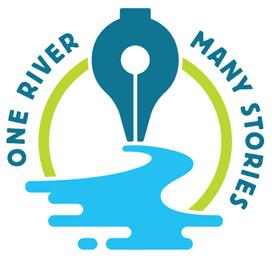The proposal for PolyMet Mining Corporation's copper-nickel mine in northern Minnesota is only the most recent example of an issue that generates strong feelings and clear divisions in a community. When a controversial, local topic creates strong divides in a community, the job of the journalist gets precarious.
On Thursday, March 3 from 5:30–7 pm, the One River, Many Stories project is hosting a panel discussion about how journalists report on tough issues in their communities.
• How do journalists negotiate these kinds of stories?
• Do they take sides?
• Do they weigh in with their own opinion?
• Is it possible to be objective in a situation where choosing a side is sure to alienate someone?
We've asked three veteran journalists — two of whom are based in communities with deep roots in mining — to join us at this March 3 One River event and talk about the role they see for journalism and how they are covering the PolyMet story. More information about the event here.
Location:
2304 West Superior Street
“One River, Many Stories” is a journalism, media and storytelling project and resource hub for journalists, educators, and citizens to foster deeper conversations about our community. This UMD Department of Journalism project is funded in part by the Knight Foundation Fund of the Duluth Superior Area Community Foundation.
St. Louis River, April 2016: See what happens when journalists and storytellers in one region turn their attention to one topic.
For more information, please contact Project Coordinator Judy Budreau at [email protected].
About the presenters:
The award-winning Timberjay newspapers (including the Ely Timberjay, Tower-Soudan Timberjay and Cook-Orr Timberjay) began more than 30 years ago when Marshall Helmberger and his wife, Jodi Summit, agreed to run the weekly newspaper in Tower, Minnesota. In an era of newspaper conglomerates, Helmberger and Summit have held steady in their commitment to remain a reliable, and reliably independent, local news organization. In March 2014, Helmberger published a piece in the Timberjay about the study that predicted a 5,000 job "mining boom" anticipated with PolyMet's plans, illustrating that the study's data showed an actual gain of 427 jobs. The Timberjay continues to follow the PolyMet story and its impact on the economics of his region, as well as presenting regional news and opinion.
Stephanie Hemphill is a writer with deep roots in northern Minnesota. Hemphill was news director for KUMD-FM for 20 years, then a regional and environment reporter for Minnesota Public Radio. She now works as a freelancer, contributing to environmental coverage at MinnPost, the non-profit on-line newspaper. Hemphill's December 2015 piece analyzes data comparing the proposed PolyMet mine with the now-closed Flambeau mine in Wisconsin; she has also written about tribal perspectives on environmental issues, and on research about mine safety. Hemphill writes for and co-edits Agate, a new on-line magazine that focuses on the people and environment of the western Great Lakes, where she has written about the growing influence of Native tribes on environmental decisions.
Aaron J. Brown is an independent writer and radio producer from Northern Minnesota's Iron Range. He writes the blog MinnesotaBrown.com, where his post Hill of Three Waters describes the ancient watershed mound in the middle of the HibTac mine. Brown's regular column in the Hibbing Daily Tribune features his writing on Iron Range mining issues, such as iron ore prices and company debt and financial health. He is the executive producer, writer and host of the Great Northern Radio Show, a traveling music and comedy variety program exploring rural Minnesota places, on Northern Community Radio (KAXE.org). He is a full time instructor of speech communication at Hibbing Community College, and the author of Overburden: Modern Life on the Iron Range.

